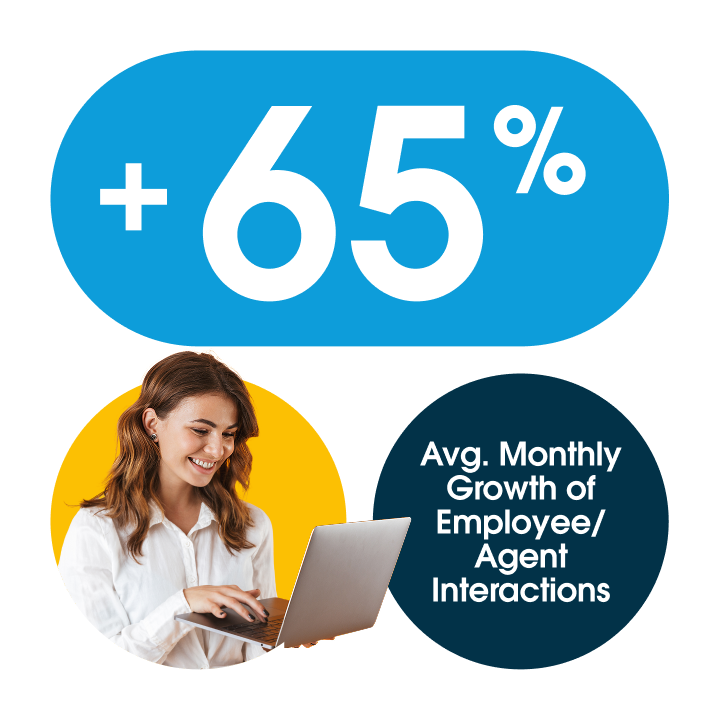If you’ve been in service for a while, you know this truth: It’s hard enough to deliver great service in one language. Add a second, third, or even a tenth language and the challenge multiplies fast.
When organizations have to cover multiple languages, coverage is often uneven. Your primary language may operate smoothly. Secondary and tertiary languages? Limited hours, slower responses, incomplete documentation. Even within the U.S., it’s common to be 24/7 in English while other language support is only available during business hours and often not on all channels. Customers feel that difference. If you don’t speak the primary language, you simply don’t get the same level of service.
To support multiple languages the traditional way, you’d need large teams for each language or bilingual teams, even when demand is insufficient to keep them close to fully utilized. It’s costly and difficult to scale, making customers work within your constraints instead of the other way around.
Rethinking service across languages
At Salesforce, we asked a simple but ambitious question: what if we could use Agentforce to deliver complete, high-quality service in every language?
To answer that, we first looked at self-service, the part of our service experience where customers find answers on their own through online resources like product documentation, release notes, and knowledge articles. Instead of translating hundreds of thousands of documents into multiple languages, which is a costly and never-ending task, we leveraged AI to do the heavy lifting.
Here’s how Agentforce on Salesforce Help works today:
- A customer asks Agentforce a question in French.
- Agentforce translates the question into English.
- Data Cloud searches our English knowledge base and compiles the best answer.
- Agentforce translates the response back into French instantly.
The customer experiences the interaction entirely in their language, even when the source material is in another. With Agentforce, answers can start in any language and be delivered in any language.
Our first milestone on this journey was Japanese, one of the most complex languages for natural-language understanding. By proving Agentforce could handle Japanese, we established the foundation for expanding into additional languages. Since then, we’ve added Spanish, French, German, Italian, and Portuguese. Today, these seven languages cover 94% of global case volume, delivering fast, 24/7 answers at scale.
“Seeing Japanese-speaking customers get instant answers through Agentforce has been incredible. Before, many had to wait or navigate a fraction of our resources, but now they can solve problems on their own, anytime, in their own language. It’s rewarding to see technology making support feel truly local.”
— Iwao Inagaki, Vice President, Technical Support, Salesforce Japan
But we didn’t stop at self-service. Live support is just as critical, and it’s where the multilingual experience often breaks down. Too often, customers start in their own language in self-service but have to switch when the issue requires live human support. We didn’t want that. Here’s how Agentforce handles it today:
- A customer types a question in French and chats with Agentforce in French.
- When the issue requires a human, Agentforce connects them to a live support engineer
- Agentforce translates the customer’s message into English for the support engineer.
- The support engineer replies in English, and Agentforce translates it back into French.
- The customer experiences a seamless, two-way conversation entirely in their language.
It’s not just AI translation. It’s AI and human agents working together, with full context carried through the handoff so a live support engineer can pick up instantly and provide accurate service from start to finish.
The result: more complete coverage, at a lower cost and a far better customer experience that is seamless and delivered in customers’ preferred language.
Learn from Salesforce’s Agentforce journey
Discover how Salesforce uses Agentforce to deliver faster, more consistent service worldwide. Learn what worked, what didn’t, and how we’re scaling AI-powered multilingual customer service.



Unlocking new markets and experiences
This shift isn’t just about what we’re doing at Salesforce. It’s about possibility. Many organizations today operate confidently in one language and only partially in a second. AI-enabled multilingual service is unlocking new possibilities, such as:
- Reaching new markets. AI makes it possible to reliably serve not just niche language communities, but entire new markets and countries, turning today’s limits into opportunities for growth and loyalty.
- Differentiating service. Expanding service into additional languages can become a unique competitive advantage, especially for first movers.
- Scaling efficiently. Long-tail languages no longer require hiring teams to cover every language. AI handles translation while your service teams focus on solving complex problems and providing great service.
This technology enables organizations to be complete in a way that was previously impossible.
From text to voice: The road ahead
Today, Agentforce supports chat and messaging. In the near future, it will extend to voice. Customers will be able to speak naturally in their preferred language and engage with an agent seamlessly, no matter what language the agent speaks, with AI translating in real time. This any-to-any model unlocks service capacity that was once tied to a single language, allowing teams to use their full capacity to serve customers in any language.
For years, the industry assumed multilingual service at scale was impractical. The costs were too high, the operations too complex. That’s no longer true. Agentforce is breaking down those barriers, enabling experiences we couldn’t achieve before; complete, inclusive, and truly global.
Great service knows no borders. With Agentforce, neither do we.
Get a first look at how businesses are using AI agents
Explore how agents are already helping companies across sales, service, internal operations and more.




















